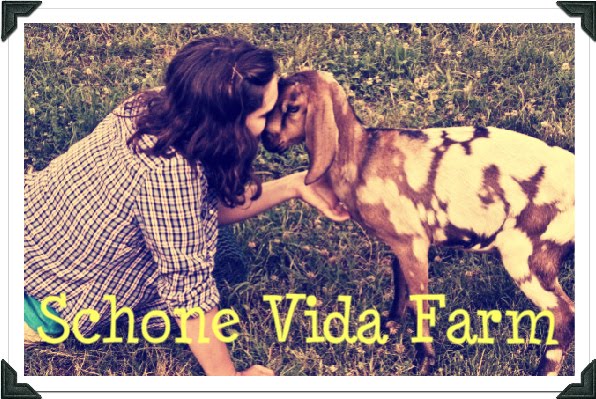Well, the chicks are growing fast. So fast that we have separated them in flocks of 20 birds each in large plastic animal troughs. Those will be too small in a matter of days. I have never seen an animal grow so quickly, but that's what this breed is made to do.
I decided that it would be best to get the chicken tractor set up so we could potentially house all the chicks in it sooner than we thought. I enlisted Justin's help to build the thing since he is an absolute construction whiz and could make the process go much faster. Here's how we did it:
Materials
~10 - 10' long 1/2" PVC pipes
~2 - 4 way slip PVC joints
~6 - T PVC joints
~4 corner PVC joints
~1 roll chicken wire 48" x 50'
~1 - 10' x 12' weatherproof tarp
~ lots of zip ties!
Description
The point of the tractor is to provide a safe, large enclosure for the birds to range in the goat pasture. The tractor will provide protection from the heat and rain, since both are major enemies of this particular type of bird. We needed to make something large enough to provide space for the growing birds until they are large enough to range on their own. We also needed to take into consideration the weight of the whole tractor. Basically, Heather or I need to be able to move the tractor around the pasture on our own with ease, but it must be heavy enough to deter predators from lifting it to get under. The tractor had to have an easy way for us to access the food, water, and birds daily. Finally, it had to have a shape and strength that could withstand the goats' curiosity (we may have to put up hot wire around it if we can't keep them off it.
Process
I bought the materials from Home Depot for a total of $84, but Heather and I will split this cost. We will also be able to many uses out of this tractor for future flocks.
Justin and I measured out the correct lengths to cut the PVC. We had to take into consideration the length added by the PVC joints (usually about 1'') and subtract that from the lengths of pipe. We had to do this because the tarp was exactly the dimension of the tractor's top. Justin cut the PVC with a hack saw and we connected the pieces WITHOUT PVC glue (we decided this would be best for now in case we needed to take the tractor apart or make modifications.
Once the PVC skeleton was erected we realized that pipe did not have enough strength to hold its shape in the middle. We rectified this by using some steel wire strung across the width at the two middle ribs to stop the stretching. Next we laid and secured the chicken wire to the frame with zip-ties. Ours were very colorful. By the end we had neon blue, orange, and pink zip ties holding the chicken wire to the frame. Then we cut an opening between the middle ribs and attached a length of chicken wire over it to serve as the door. We wrapped a 2' length of PVC to the bottom of the door to serve at a weight. The door is secured closed with a piece of velcro webbing.
Lastly, we draped the tarp over the entire tractor. Then we used zip ties to connect one half of the tarp to the tractor frame. We will use bungee cords to attach the other half to the door-side of the tractor since we'll need to lift the tarp to get to the door.
The result was a 12' x 6' beautifully sturdy chicken tractor. The construction took us roughly 3 hours with the chicken wire taking the longest part of the whole thing. Having two people definitely made the process faster and much less frustrating. Now our chicks will have a wonderful shelter in which to enjoy the outdoors and peck around for bugs and seeds. I am very proud of our product!
This is the door-side of the complete tractor



